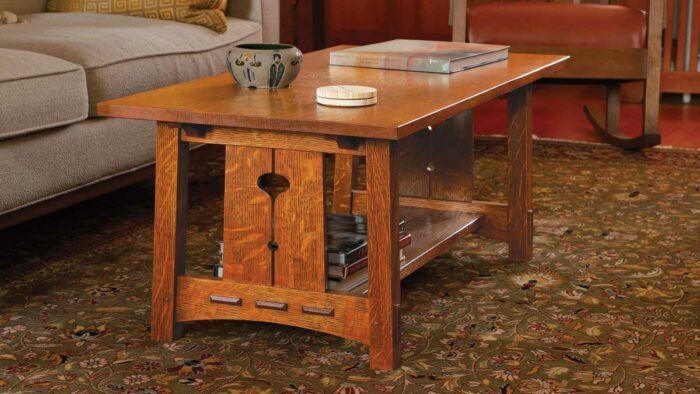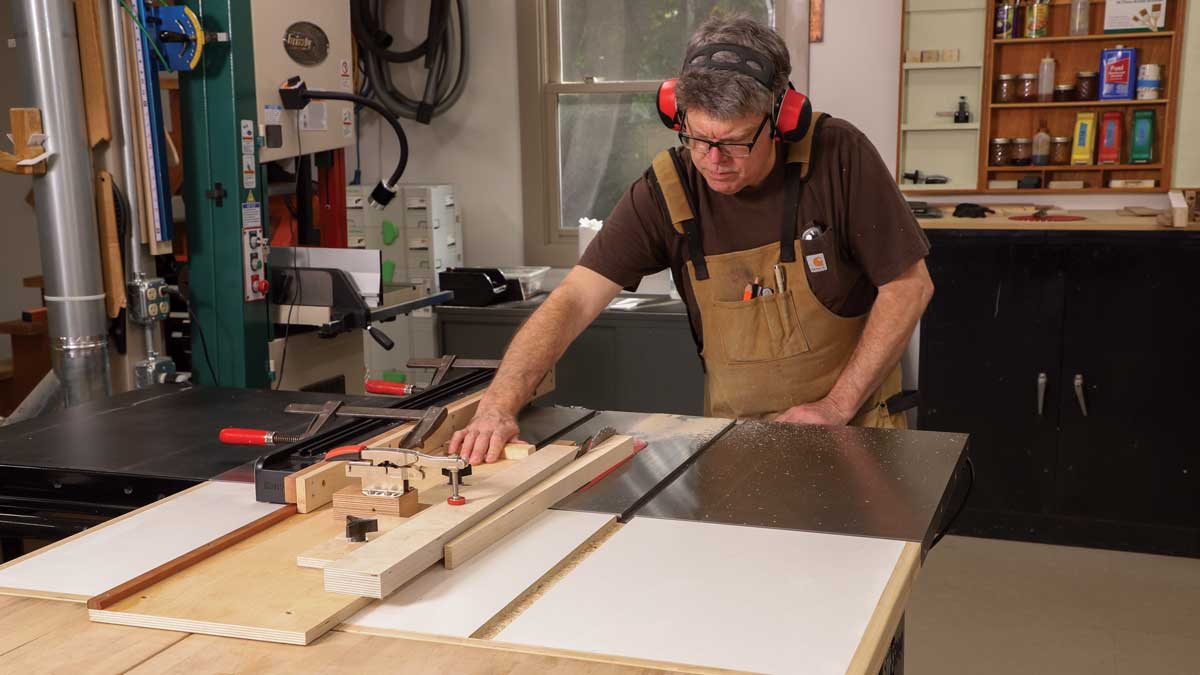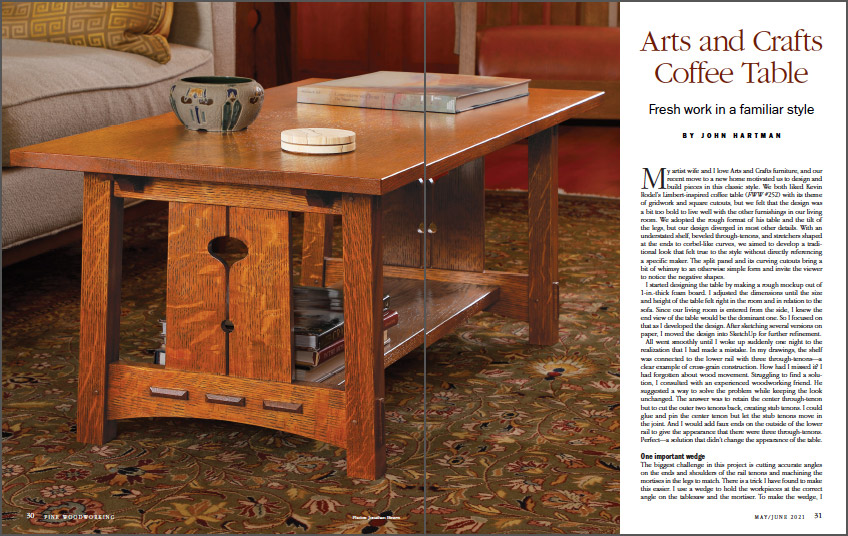Arts & Crafts Coffee Table with Story-Book Charm
With an understated shelf, beveled through-tenons, and stretchers shaped at the ends to corbel-like curves, this coffee table evokes the traditional Arts and Crafts style without being too serious.

Synopsis: With an understated shelf, beveled through-tenons, and stretchers shaped at the ends to corbel-like curves, this coffee table evokes the traditional Arts and Crafts style without being too serious. The split panel and its curving cutouts bring a bit of whimsy to the design. Stub tenons on the shelf-to-rail joinery help deal with the issue of cross-grain construction. The legs are slightly splayed, giving the table a solid stance.
My artist wife and I love Arts and Crafts furniture, and our recent move to a new home motivated us to design and build pieces in this classic style. We both liked Kevin Rodel’s Limbert-inspired coffee table (FWW #252) with its theme of gridwork and square cutouts, but we felt that the design was a bit too bold to live well with the other furnishings in our living room. We adopted the rough format of his table and the tilt of the legs, but our design diverged in most other details. With an understated shelf, beveled through-tenons, and stretchers shaped at the ends to corbel-like curves, we aimed to develop a traditional look that felt true to the style without directly referencing a specific maker. The split panel and its curving cutouts bring a bit of whimsy to an otherwise simple form and invite the viewer to notice the negative shapes.
I started designing the table by making a rough mockup out of 1-in.-thick foam board. I adjusted the dimensions until the size and height of the table felt right in the room and in relation to the sofa. Since our living room is entered from the side, I knew the end view of the table would be the dominant one. So I focused on that as I developed the design. After sketching several versions on paper, I moved the design into SketchUp for further refinement.

All went smoothly until I woke up suddenly one night to the realization that I had made a mistake. In my drawings, the shelf was connected to the lower rail with three through-tenons—a clear example of cross-grain construction. How had I missed it? I had forgotten about wood movement. Struggling to find a solution, I consulted with an experienced woodworking friend. He suggested a way to solve the problem while keeping the look unchanged. The answer was to retain the center through-tenon but to cut the outer two tenons back, creating stub tenons. I could glue and pin the center tenon but let the stub tenons move in the joint. And I would add faux ends on the outside of the lower rail to give the appearance that there were three through-tenons. Perfect—a solution that didn’t change the appearance of the table.
Our talented illustrators make the projects featured in FWW
easier to understand. Here, we show off some favorite illustrations
John Hartman has done for us over the years.
One Important Wedge
The biggest challenge in this project is cutting accurate angles on the ends and shoulders of the rail tenons and machining the mortises in the legs to match. There is a trick I have found to make this easier. I use a wedge to hold the workpieces at the correct angle on the tablesaw and the mortiser. To make the wedge, I first laminate two pieces of 3⁄4-in. Baltic-birch plywood to make a blank 1-1⁄2 in. thick. Then, using a tapering jig on the tablesaw, I cut the rectangular blank to a wedge shape. I face the wedge with sandpaper so workpieces will not slip.
 From Fine Woodworking #289
From Fine Woodworking #289
To view the entire article, please click the View PDF button below.







Comments
Really nice work here. I love the finish.
Are the plans available for this yet?
this is fun to see... I did a similar thing, basing my design on a simplified version of Limbert's coffee table.
John, thanks for a great project! When the FWW issue arrived, my wife saw the picture on the cover and said, "Make this for me!" HA! So, I'll be starting on this soon.
Can you help with the specific gel stains you used after the sealing and fuming? I've had more trouble with staining/finishing than all the other aspects of woodworking combined! Ha!
Thanks again, John!
John
Where can I find the plans to download for this project? I've searched your website and have not seen it. Thanks. George
https://www.finewoodworking.com/digital-plans-library/arts-and-crafts-coffee-table?category=tables
Thanks user-5981532 for the link, but your link is for another coffee table, not the one in this article (Arts & Crafts Coffee Table with Story-Book Charm, by John Hartman).
Splitting the tenons into threes was all that needed to happen. Those tenons are rarely glued anyway, as there is virtually nothing to be gained by gluing them - whether just one or all three.
I have searched the website for these plans and cannot find them. The plans in the web address are for a different table
The plans are not available at FW, you have to purchase from Taunton Press here:https://www.tauntonstore.com/
Log in or create an account to post a comment.
Sign up Log in